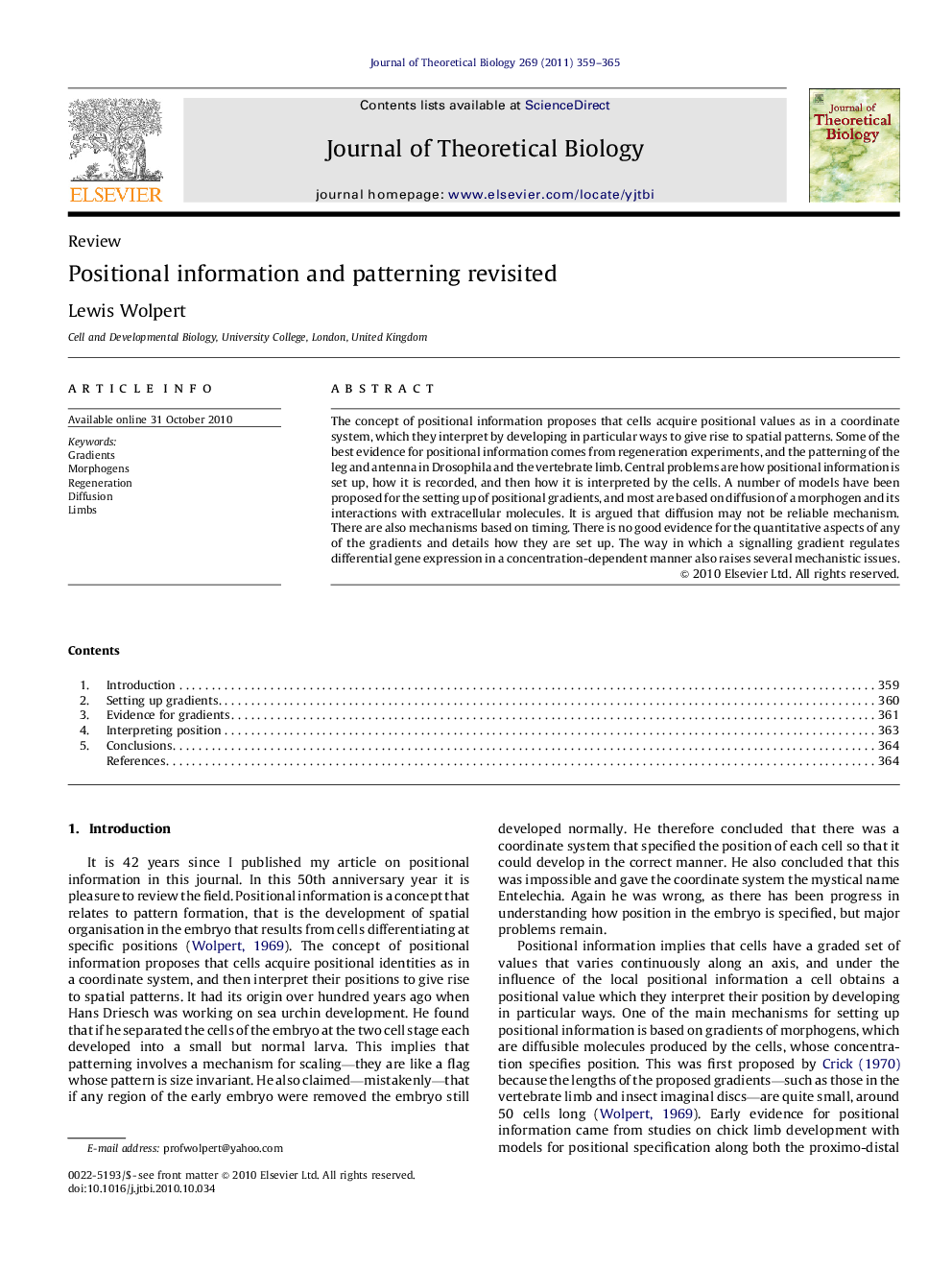| Article ID | Journal | Published Year | Pages | File Type |
|---|---|---|---|---|
| 6371560 | Journal of Theoretical Biology | 2011 | 7 Pages |
The concept of positional information proposes that cells acquire positional values as in a coordinate system, which they interpret by developing in particular ways to give rise to spatial patterns. Some of the best evidence for positional information comes from regeneration experiments, and the patterning of the leg and antenna in Drosophila and the vertebrate limb. Central problems are how positional information is set up, how it is recorded, and then how it is interpreted by the cells. A number of models have been proposed for the setting up of positional gradients, and most are based on diffusion of a morphogen and its interactions with extracellular molecules. It is argued that diffusion may not be reliable mechanism. There are also mechanisms based on timing. There is no good evidence for the quantitative aspects of any of the gradients and details how they are set up. The way in which a signalling gradient regulates differential gene expression in a concentration-dependent manner also raises several mechanistic issues.
